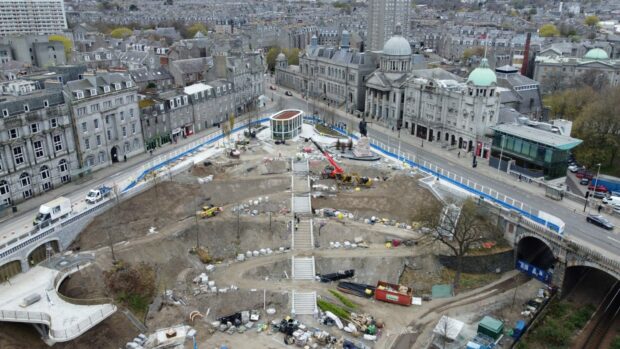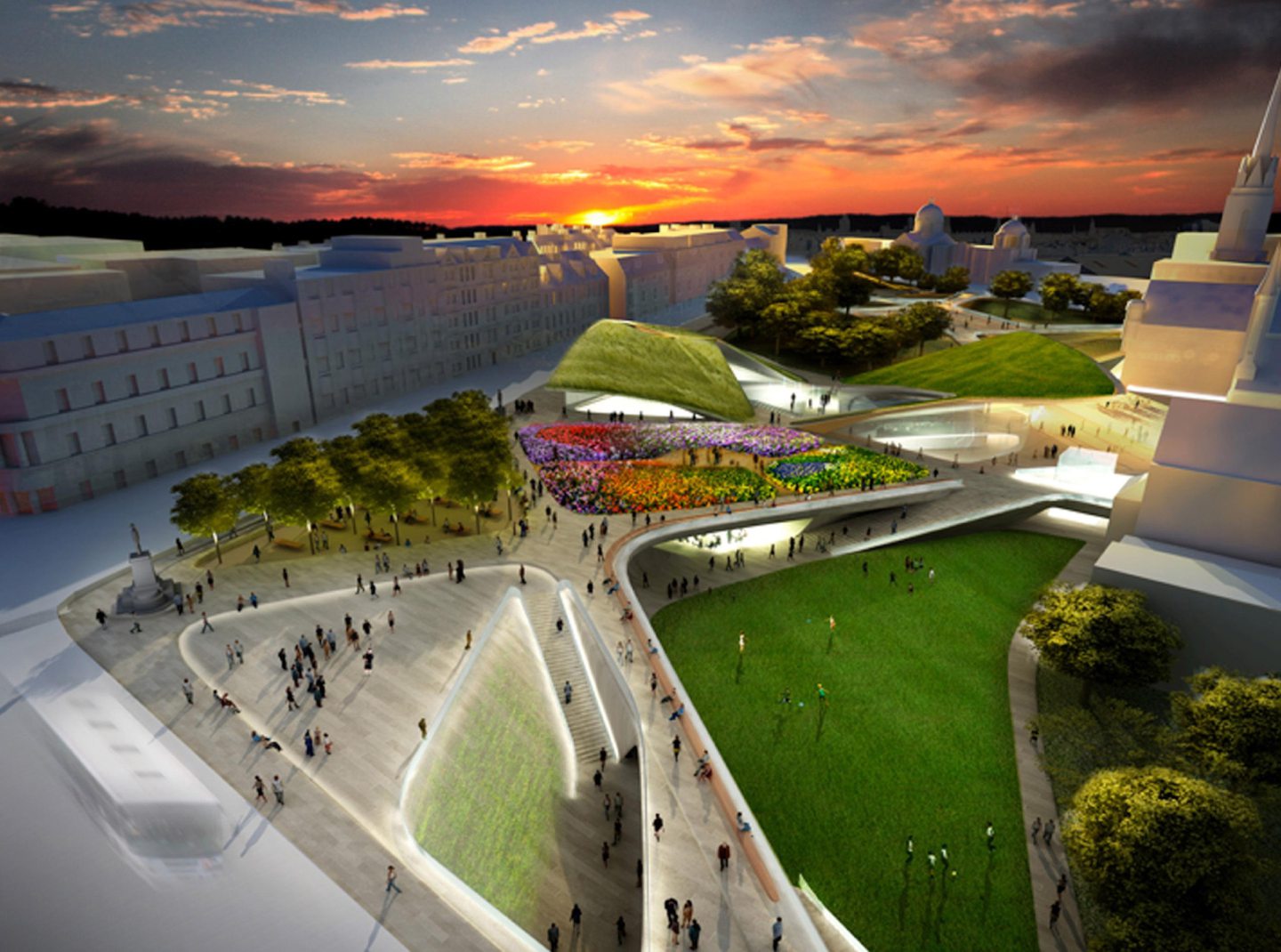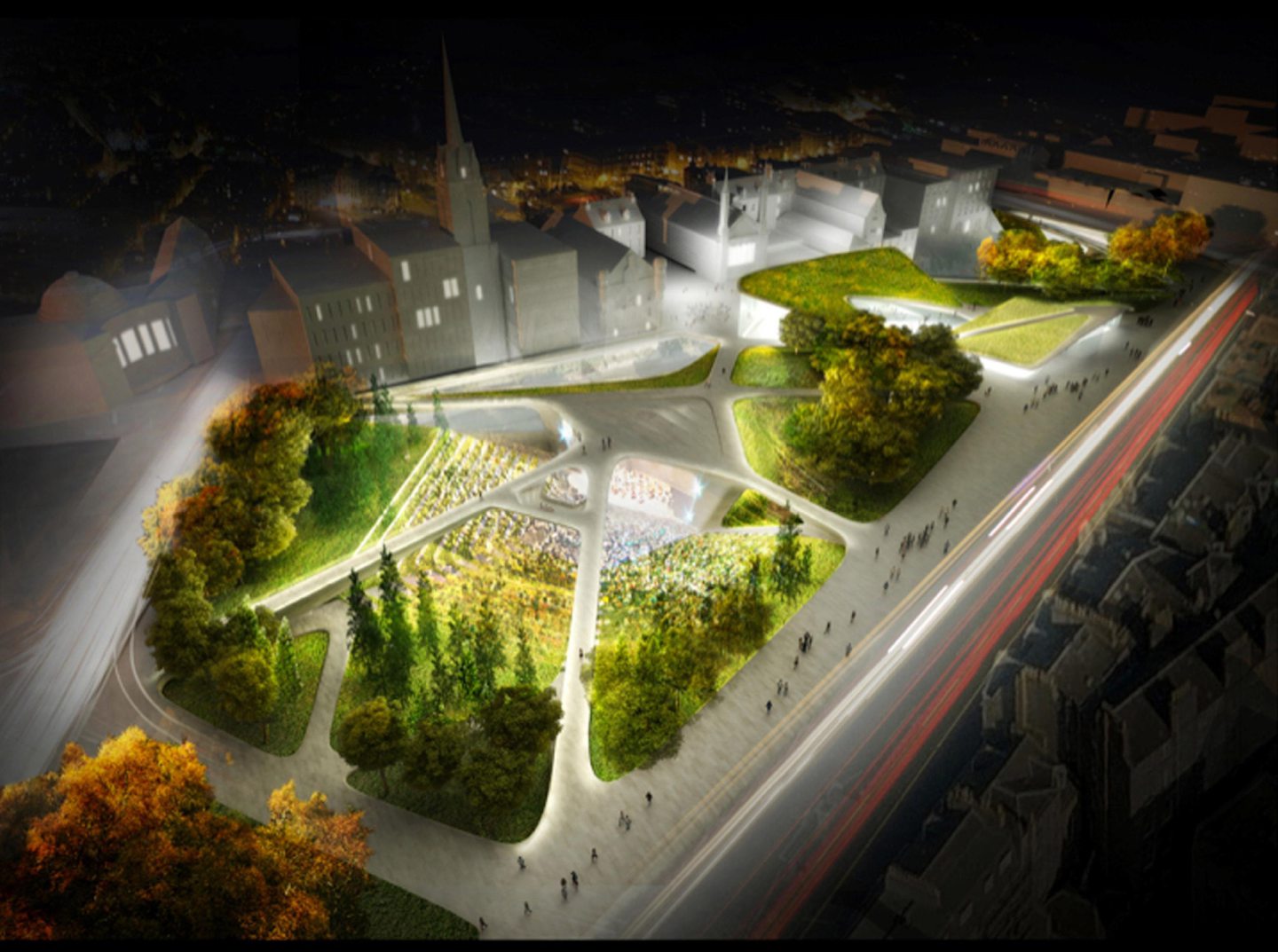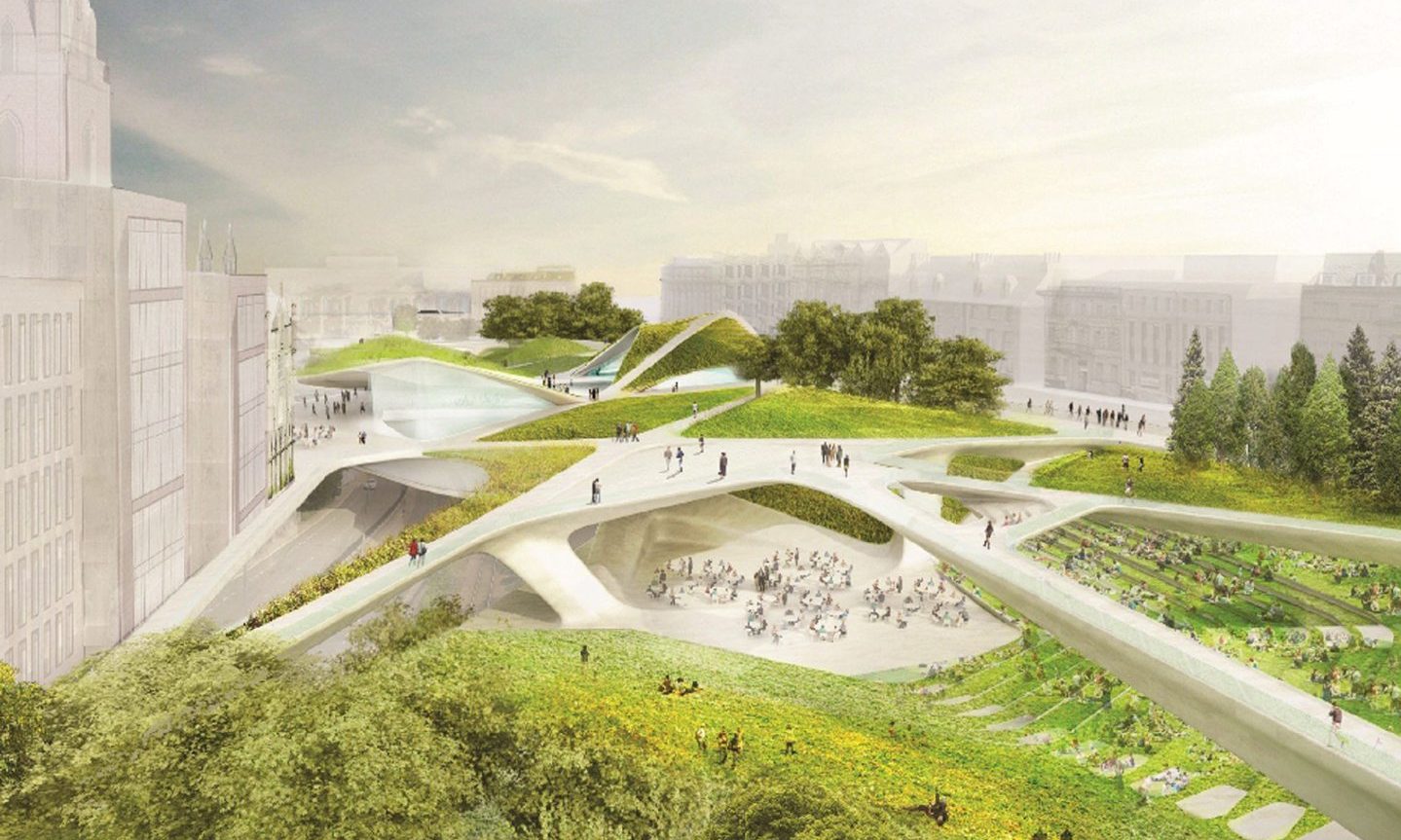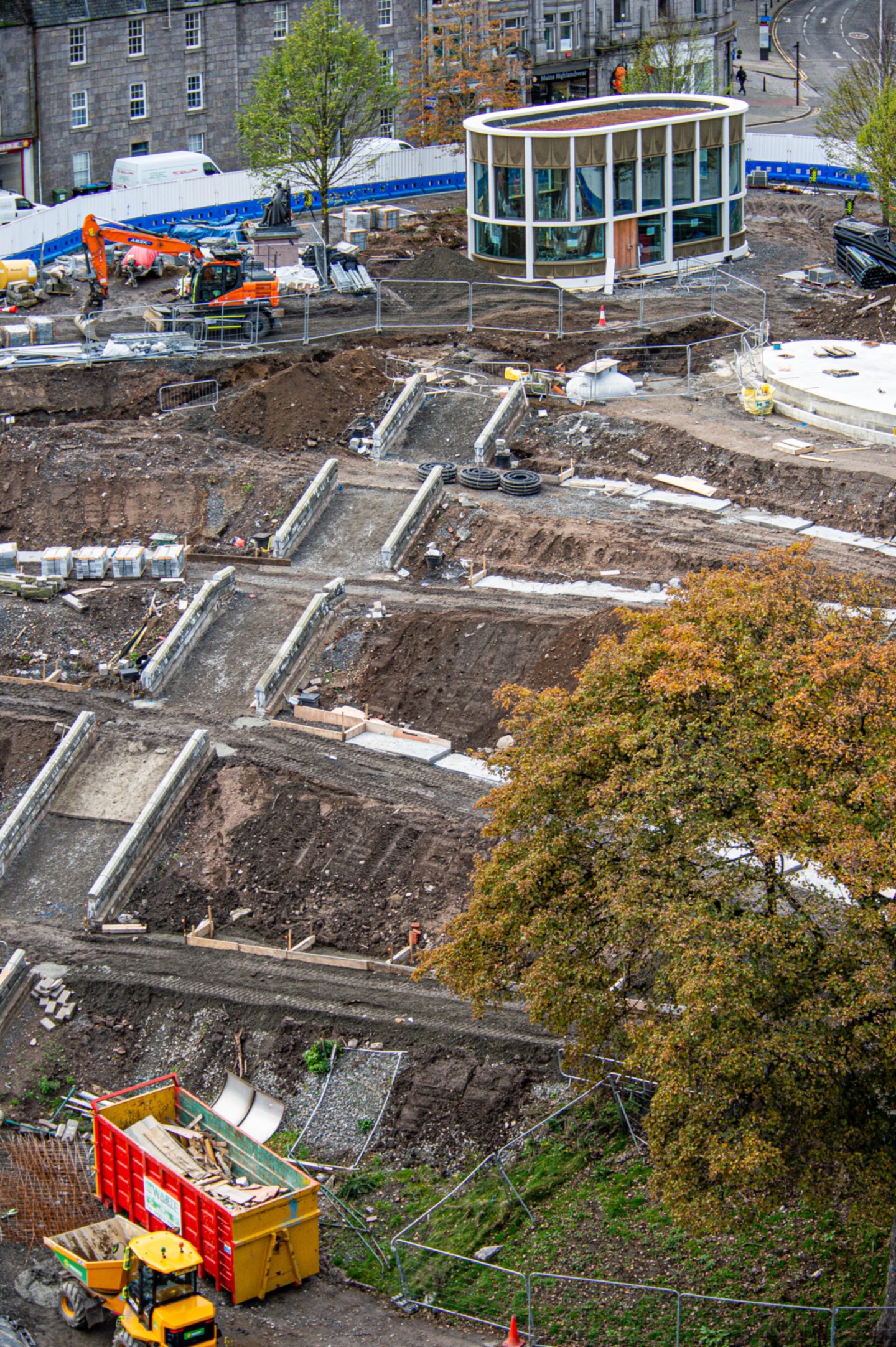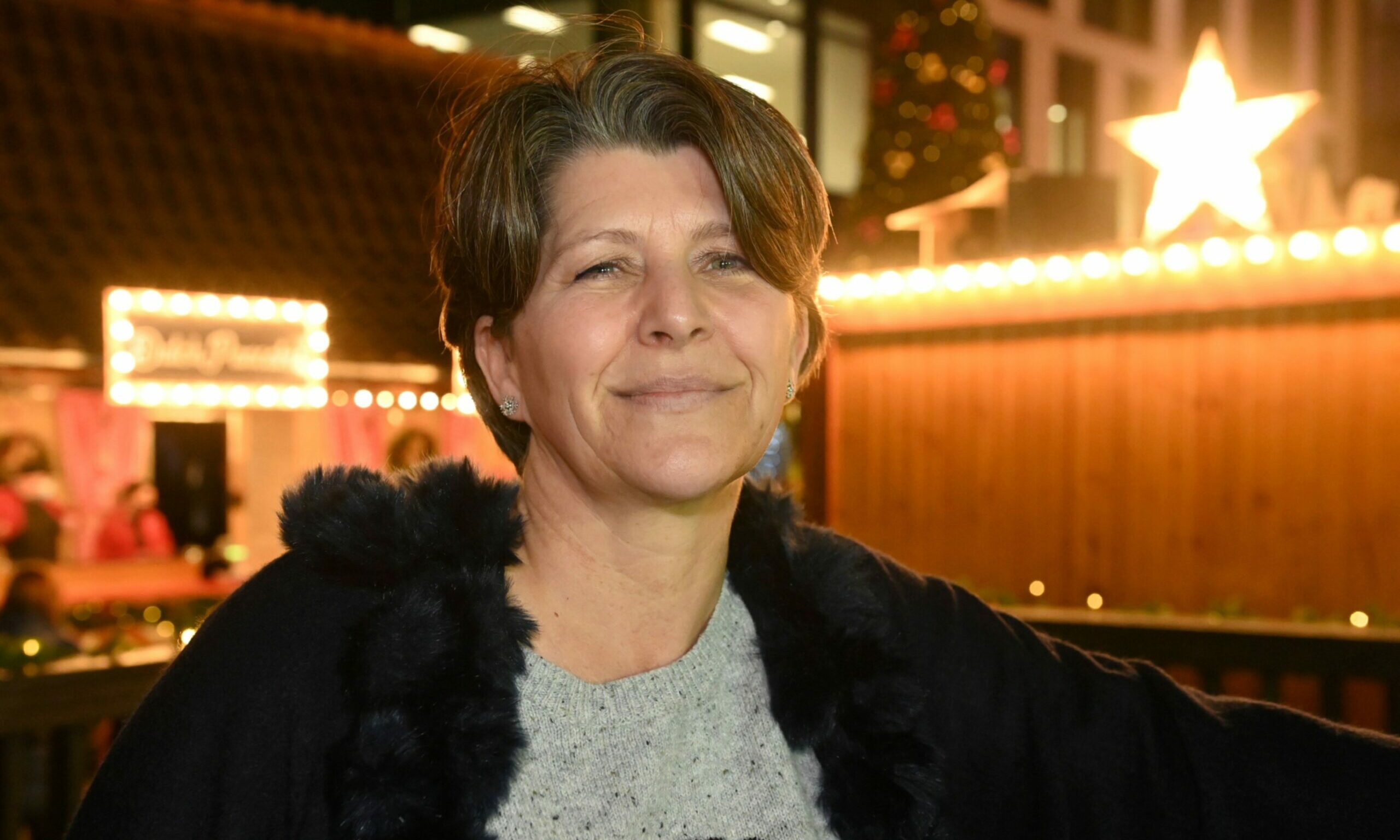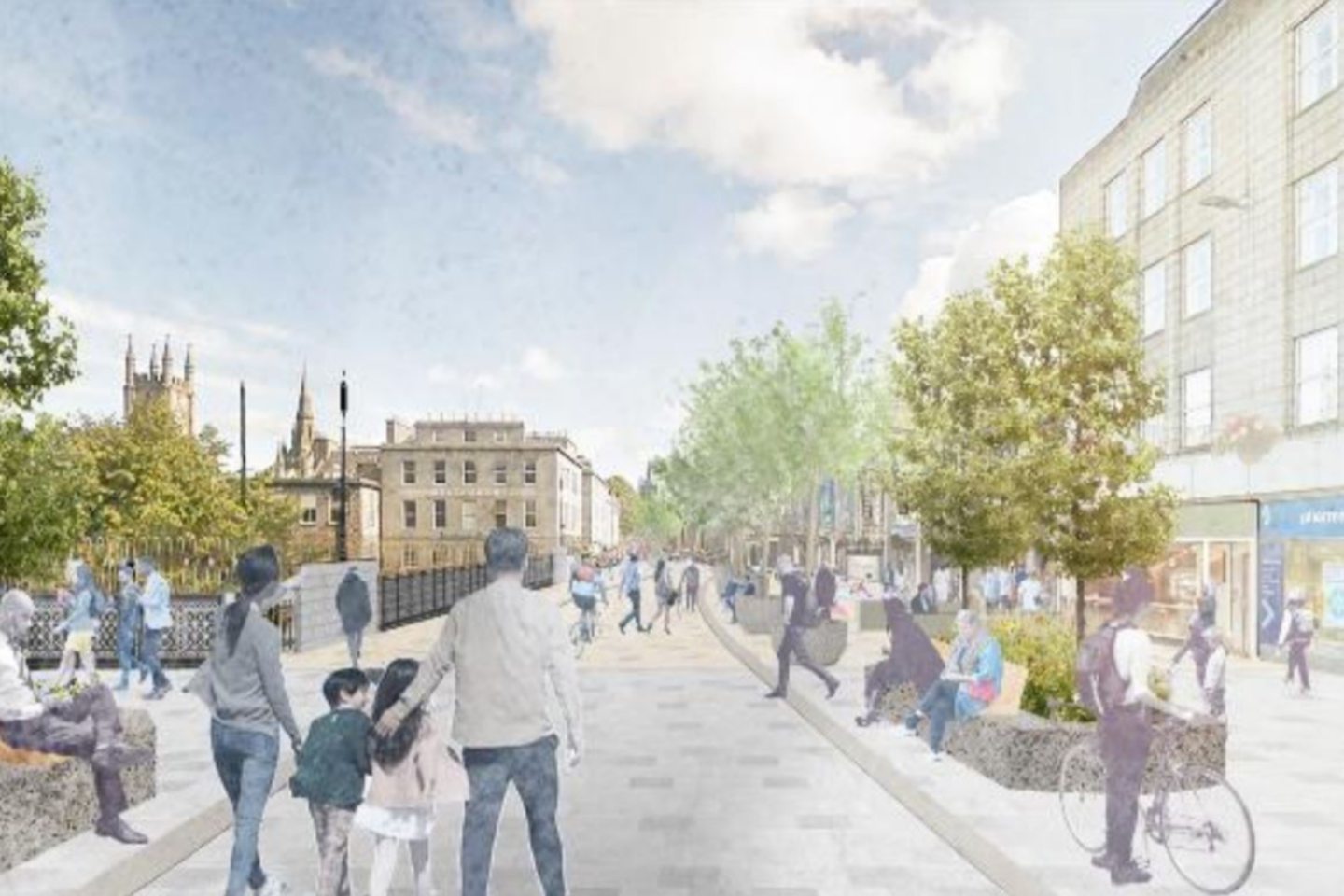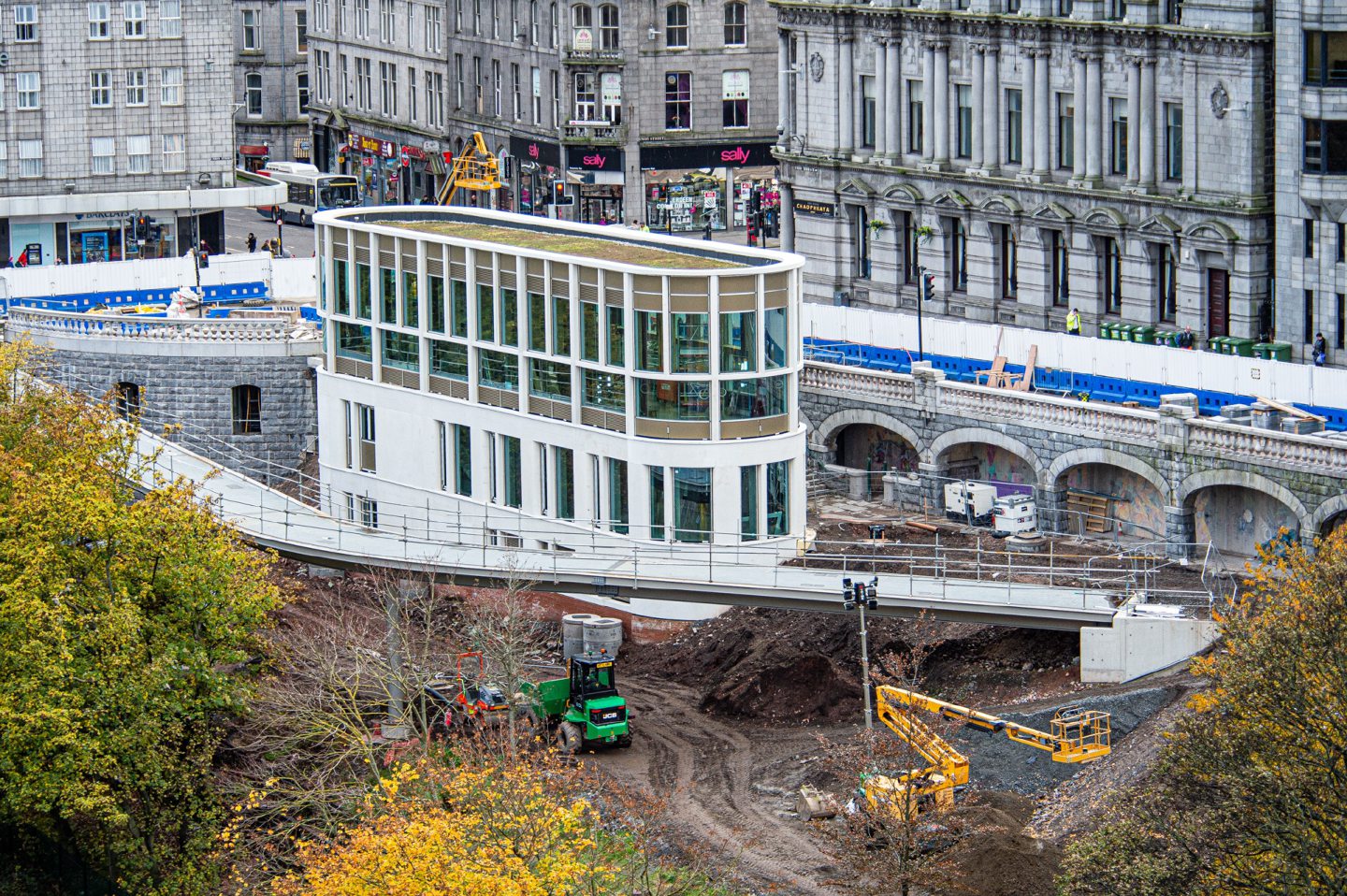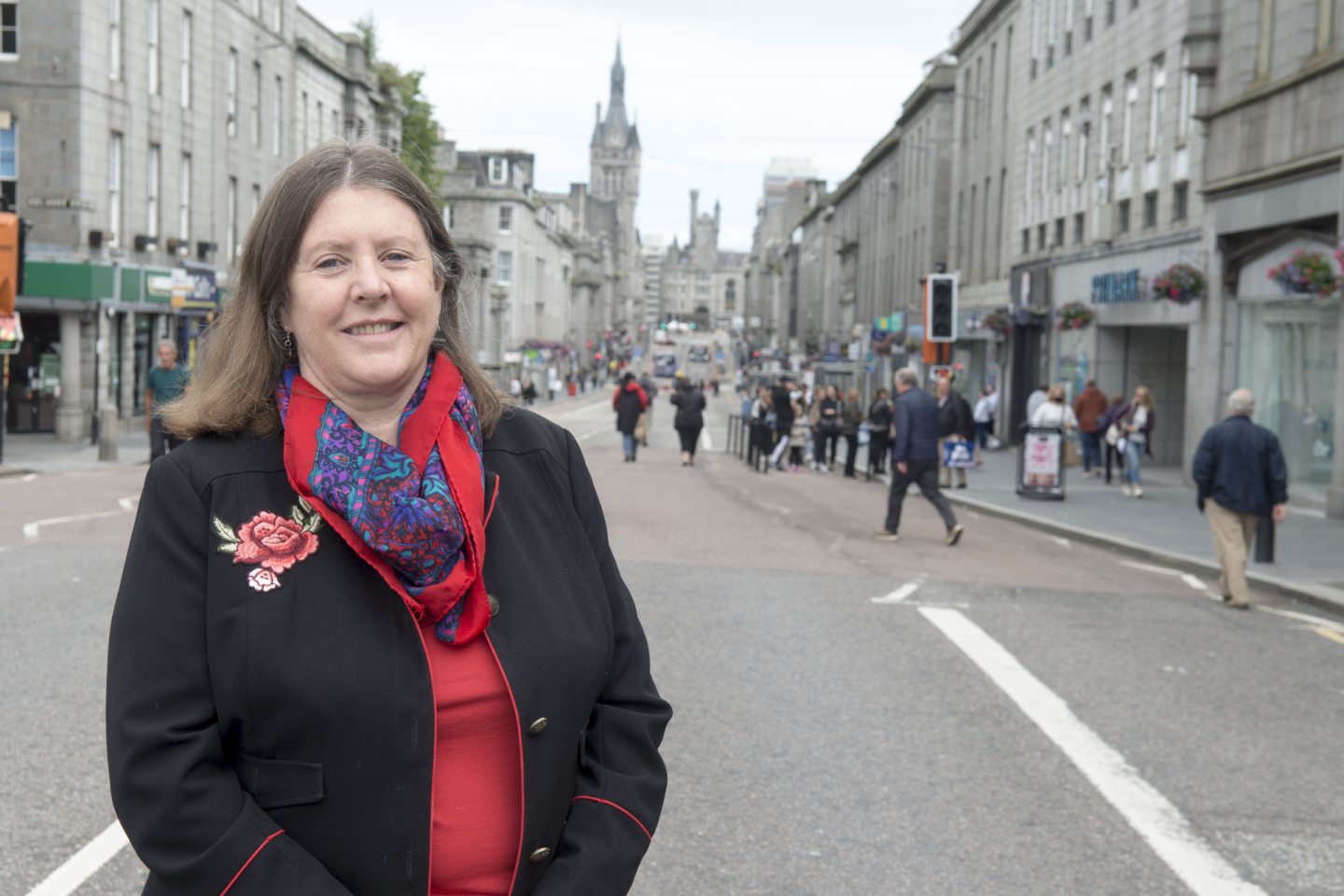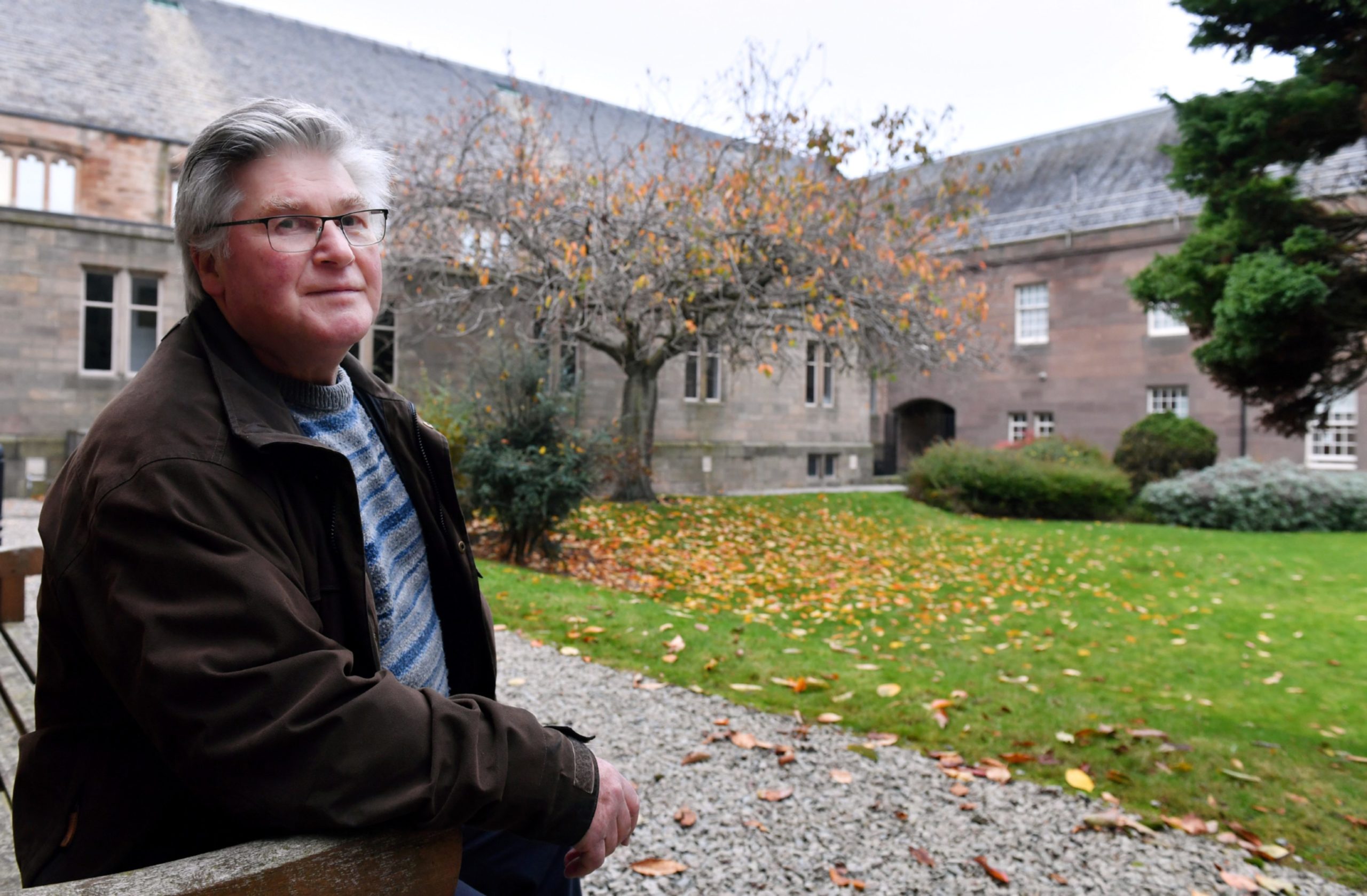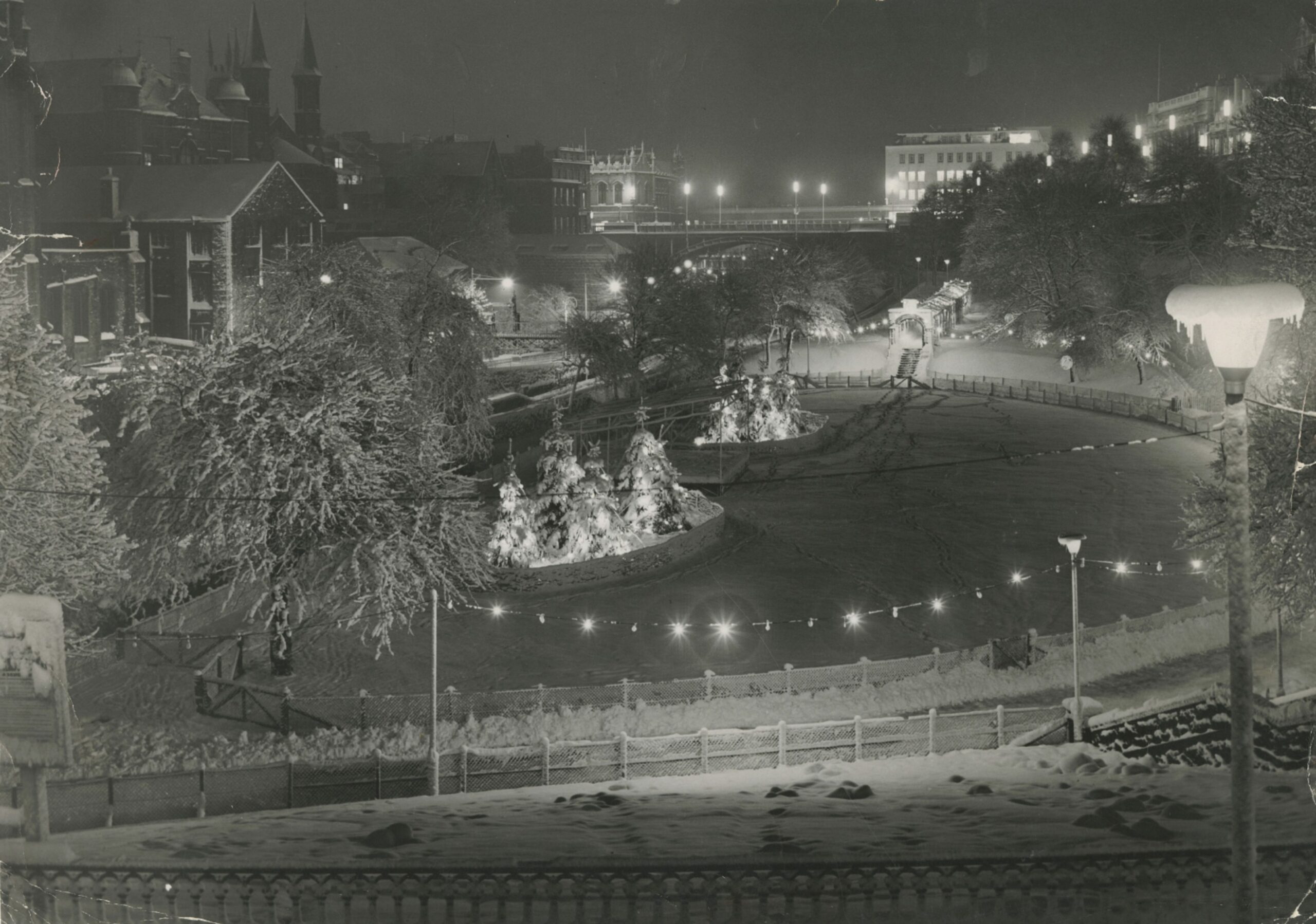It was a referendum which provoked strong views on both sides and continues to make headlines today.
And, even as the result was announced, showing a narrow majority for one group, their opponents claimed that the process had been manipulated.
But this wasn’t a vote about Scottish independence or Brexit. Instead, it was held in 2012 to decide whether Aberdonians were in favour of a £140m plan to transform Union Terrace Gardens in the heart of the city.
People were asked if they wanted to keep the cherished area as it was or endorse the City Garden Project redevelopment, to which north-east businessman Sir Ian Wood had committed £50m of his own money.
It was a controversial subject a decade ago. More than 86,000 votes were cast online, by post and by phone during the poll, which ended up with 45,301 votes in favour of the project and 41,175 people opposed to the plans.
And there followed months of debate and a hotly-disputed U-turn by Aberdeen City Council when it rejected the ballot result and sparked fury.
Mr Wood’s “transformational” vision for the Victorian park, which involved raising the gardens to street level and creating a civic square, divided the public and local Granite City politicians when the idea was originally mooted.
But, despite backing from the SNP-led council, the initiative turned into another of those subjects on which everybody could agree to differ.
A public consultation was held in April 2010 which revealed that 55% of almost 12,000 people who expressed an opinion were against the proposal.
Some felt it was aesthetically pleasing on the eye, but others retorted it would remove the unique character of the green space of Aberdeen. And a significant number questioned the costs involved, even with Sir Ian’s involvement.
But regardless of the objections and differences of opinion, councillors chose to progress with the scheme later that year and, in 2011, even commissioned an international design competition for the project.
The concept had now gained momentum and in January 2012, Granite Web was chosen as the preferred design, and the design was backed by the public – or those who chose to vote – in a referendum held in March of that year.
However, the result at 52%-48% was hardly a ringing endorsement, considering how much cash had been spent on promoting the new proposals.
The group Friends of Union Terrace Gardens, who opposed the refurbishment, argued that their rivals had engaged in expensive propaganda because they were not required to stick within a campaign limit of £8,000.
Their spokesman Mike Shepherd said later: “This was not a fair referendum. We do not accept the result. The process was seriously flawed.”
In which circumstances, it was hardly surprising the Gardens turned into a political battleground after the SNP administration was voted out of power.
Back to the drawing board
At the May local government elections in 2012, Labour – which had pledged to scrap the plans if elected – became the largest party on the council.
And a vote on whether to formally reject the scheme was held towards the end of the summer, which the Labour-led administration won 22-20.
The Press & Journal subsequently reported: “Sir Ian Wood said that his offer to invest £50m in the City Garden Project would remain on the table for a year, a deadline he extended twice before it was rescinded in December 2013.”
However, if anybody imagined that was the end of the matter, they were soon in for a rude awakening. Every other month, there seemed to be stories of how Aberdeen had squandered a golden opportunity, or new plans and images were being created by the council to bring the site back to its former glory.
Nobody argued that sticking with the status quo was an option. Or not after a fresh row erupted in 2015 when graphic pictures emerged of drug users injecting themselves in a makeshift campsite, in the gardens.
Dozens of burnt spoons, syringes, and drink bottles were discovered discarded at the site, sparking a furious reaction from some councillors who were emphatic that the venue was being allowed to wither on the vine because of bureaucratic dithering and lack of foresight from the local authority.
Finally, in August 2019, council leaders gathered at the Victorian sunken gardens to cut the first piece of turf and commence work on a new £25m scheme to establish a jewel in the crown for future visitors to Aberdeen.
The flagship City Centre Masterplan was focused on constructing an inclusive 21st-Century space by improving access, amenity and activity and enhancing the gardens’ heritage features without resorting to the wholesale and “unnecessary” changes envisaged in the Garden Web venture.
As usual, the critics pounced and derided the proposals, but Marie Boulton, the culture and City Centre Masterplan spokesperson, told the P&J: “We are taking all that’s wonderful about Union Terrace Gardens – its setting, its greenery, its heritage – and enhancing that.
“The design is a direct response to how people wanted their city to evolve. That we are ready to start work is truly momentous, not just for this generation, but in terms of legacy.
“The changes to the build environment in Aberdeen are dramatic, but it’s also bringing a real shift in the cultural outlook of residents and the outside view of the city, with visitors embracing the plans we have for the future.”
Another delay in building the future
These included a new accessible walkway route into the gardens from Union Street; lift access from Union Terrace into the upper level of the gardens through a new entrance building on Union Terrace at the existing Burns Monument; and reinstating the “grand staircase” as a central part of the new accessible route into the gardens from Rosemount Viaduct.
The transformation was expected to take between 18 and 21 months to complete… but that was before the devastation wrought by Covid 19.
Here we are, 10 years on from the referendum and matters have gone full circle. The SNP were in power at the start of 2012 and, after the recent council elections, have joined forces with the Lib Dems to become the ruling group.
However, they will now inherit the scheme which was brought to the brink of fruition by their political opponents and, despite the hasty cancellation of a “soft launch” of the newly-restored Gardens shortly before the vote on May 5, will be tasked with opening them to the public in the weeks ahead.
So how do some of those who were for or against the Garden Web look back on the saga which has unfolded? Was it a missed opportunity for the city? Or did the council get it right by deciding to implement its own scheme?
Cllr Sandra Macdonald told me this week: “I strongly supported Aberdeen City Council’s decision 10 years ago to scrap plans for in-filling Union Terrace Gardens, and I am even more certain now that was the right decision.
“The Den Burn may be under ground as it comes close to its mouth in Aberdeen Harbour, but the Denburn Valley is still marked by Union Terrace Gardens and is a key part of the geography of our city centre.
“It is the last public open space of its kind in the inner city, and a vital green lung for the city as a whole.
“I would have opposed any proposal to fill in that open space, even one which created a kind of rooftop garden in its place. The lie of the land really does matter, and future generations will still be able to see the underlying shape of Aberdeen and understand how the city has grown.
“I am excited to see the re-energised Gardens which are being created even now, not least from the elegant Sky Bridge.
“I am particularly looking forward to enjoying coffee and cake at the Common Sense coffee house and bar, due to open in one of the outstanding pavilions which will link the Gardens with Union Terrace and Union Street above.
“Aberdeen made a hugely important choice a decade ago, to develop a city centre for residents and visitors to enjoy as pedestrians and cyclists, with a focus on public transport rather than private cars.
“The whole city centre masterplan and pedestrian-friendly streets arise from that choice, and mean that Aberdeen is now leading the way.”
However, former councillor John Corall is still convinced he was correct to put his weight behind the plan which was eventually rejected in 2012.
He told me: “I took a lot of flak for daring to support a scheme that could have been paid for by Sir Ian Wood and would have addressed aspects lacking in the present version but what we have today is neither one thing or another.
“Ian Wood’s plans were merely concepts, but politics and hysteria clouded judgements and now we have too little too late.
“There will be easier access from Union Street, but it looks like a series of flyovers making for a dark and gloomy area where the old turntable used to be. It was so crass and insensitive to erect a faux tram immediately behind the Burns Statue, so a lift could be accessed to one of the many roadways below.
“We burnt our trams [in 1958] and I get the feeling that there will be little appetite for the present ones. I will watch with interest to see if history will repeat itself regarding the steepness of some of the gradients and whether only plants with crampon roots will survive.
“Sadly they have not included easier access to the Green, or to the [railway] station and nor to Belmont Street. All of which would have been addressed in the previous concepts.
‘It’s a half-baked mishmash’
“The statue of [William] Wallace will be standing on an island, but for how long as Aberdeen’s love of water and fountains is very short lived? And there is a huge zigzag path covering a huge amount of ground that could have been planted out with green plants rather than black asphalt.
“Sadly, it’s a half-baked, over-budget mishmash reminiscent of the camel, a horse designed by a committee.”
They might be called UNION Terrace Gardens. But there’s rarely any danger of UNITY breaking out on this issue among Aberdeen folk.
